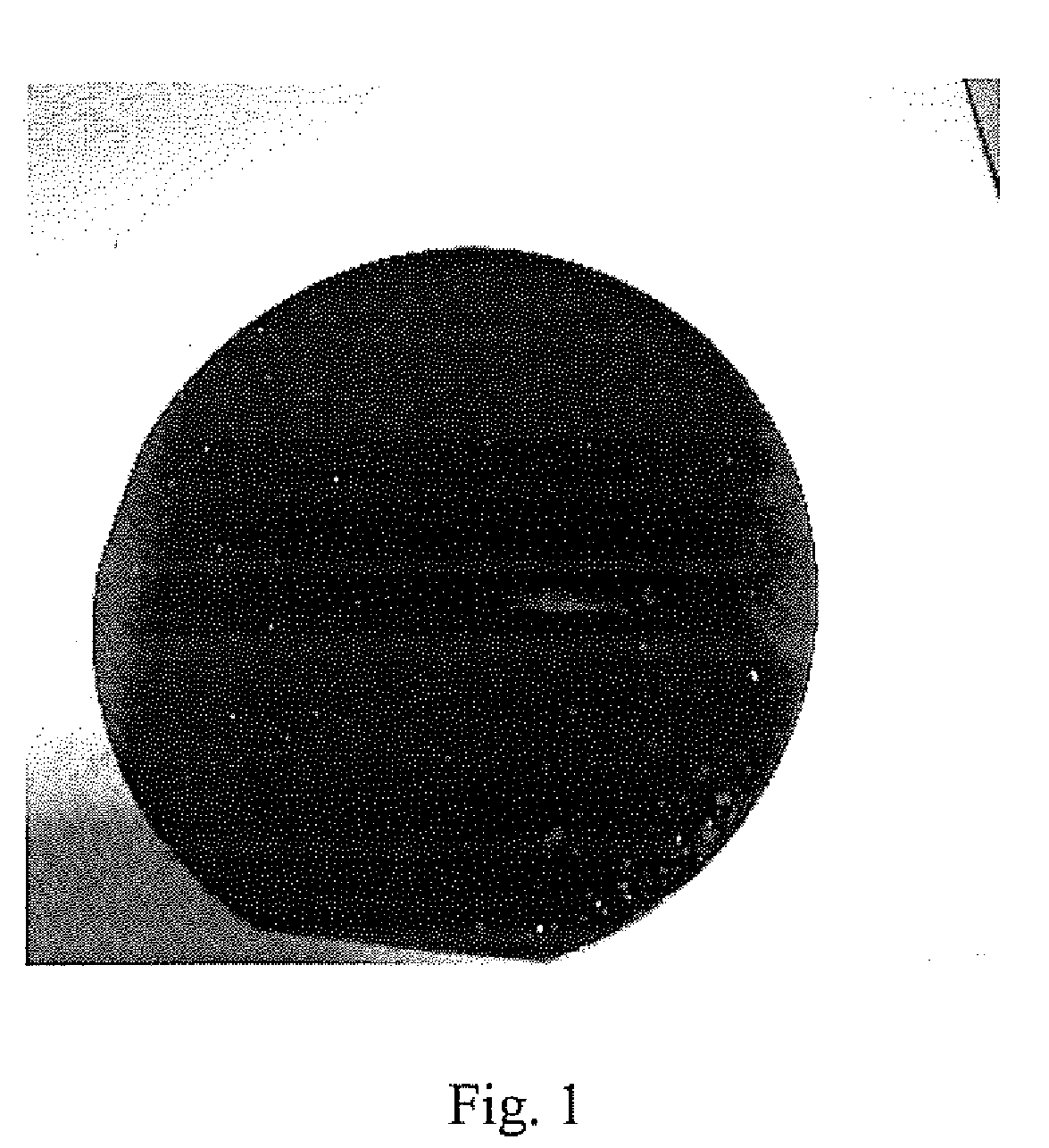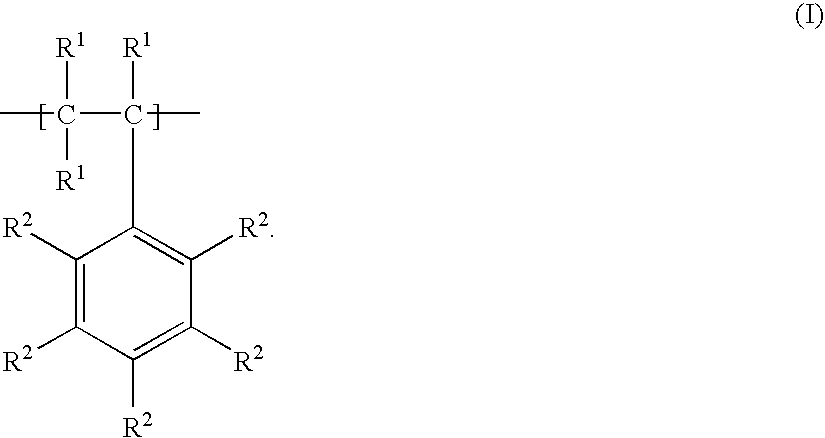Spin-on protective coatings for wet-etch processing of microelectronic substrates
a technology of microelectronic substrates and protective coatings, which is applied in the direction of microstructural technology, microstructural devices, synthetic resin layered products, etc., can solve the problems of many common thermoplastic polymers such as polystyrene, poly(cyclic olefins), and polypropylene and polyethylen
- Summary
- Abstract
- Description
- Claims
- Application Information
AI Technical Summary
Benefits of technology
Problems solved by technology
Method used
Image
Examples
example 1
Preparation of Primers I-IV
[0058]Primer I was prepared by dissolving 0.5 g of diphenyldichlorosilane in 99.5 g of xylene followed by filtering with a 0.2 / 0.45-μn polypropylene filter.
[0059]Primer II was prepared by dissolving 0.5 g of diphenyldimethoxysilane in 90 g of isopropanol and 10 g of water followed by filtering with a 0.2 / 0.45-μm polypropylene filter.
[0060]Primer III was prepared by dissolving 0.5 g of diphenylsilanediol and 0.5 g of phenyltrimethoxysilane in 90 g of propylene glycol monomethyl ether (PGME) and 10 g of water. The primer was aged for at least 24 hours so that the silanes were partially hydrolyzed and condensed. The primer was then filtered using a 0.2 / 0.45-μm polypropylene filter.
[0061]Primer IV was prepared by dissolving 1.0 g of diphenylsilanediol and 1.0 g of phenyltrimethoxysilane in 88 g of PGME and 10 g of water. The primer was similarly aged and then filtered using a 0.2 / 0.45-μm polypropylene filter.
example 2
Preparation of Primer V (Comparative Primer)
[0062]In a manner similar to Example 1, Primer V was prepared by adding 1.0 g of 3-aminopropyltriethoxysilane (obtained from Gelest, Inc, Morrisville, Pa.) into 95 g of PGME and 5 g of water. The primer was aged for at least 24 hours so that the silane was partially hydrolyzed and condensed. The primer was then filtered using a 0.2 / 0.45-μm polypropylene filter.
example 3
Preparation of Primer Vi
[0063]A diethyl fumarate-modified, amino functional silane was prepared by mixing one mole of N-(3-trimethoxysilyl)-propylethylenediamine with one mole of diethyl fumarate, followed by stirring at room temperature for 48 hours. The mixing process was exothermic, indicating the immediate reaction of the two components.
[0064]Primer VI was prepared by dissolving 1 g of the above modified silane into 90 g of PGME and 10 g of water. The mixture was aged for 24 to 48 hours at room temperature and then filtered using a 0.2 / 0.45-μm polypropylene filter.
PUM
| Property | Measurement | Unit |
|---|---|---|
| Temperature | aaaaa | aaaaa |
| Length | aaaaa | aaaaa |
| Fraction | aaaaa | aaaaa |
Abstract
Description
Claims
Application Information
 Login to View More
Login to View More - R&D
- Intellectual Property
- Life Sciences
- Materials
- Tech Scout
- Unparalleled Data Quality
- Higher Quality Content
- 60% Fewer Hallucinations
Browse by: Latest US Patents, China's latest patents, Technical Efficacy Thesaurus, Application Domain, Technology Topic, Popular Technical Reports.
© 2025 PatSnap. All rights reserved.Legal|Privacy policy|Modern Slavery Act Transparency Statement|Sitemap|About US| Contact US: help@patsnap.com



